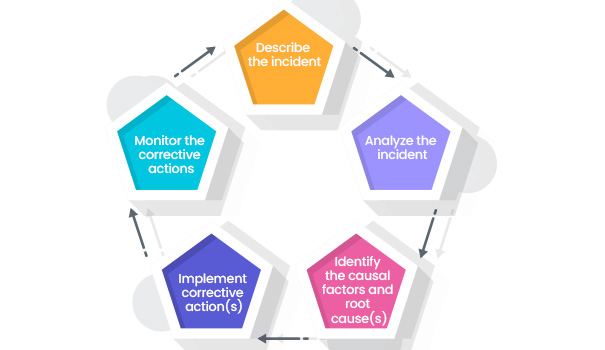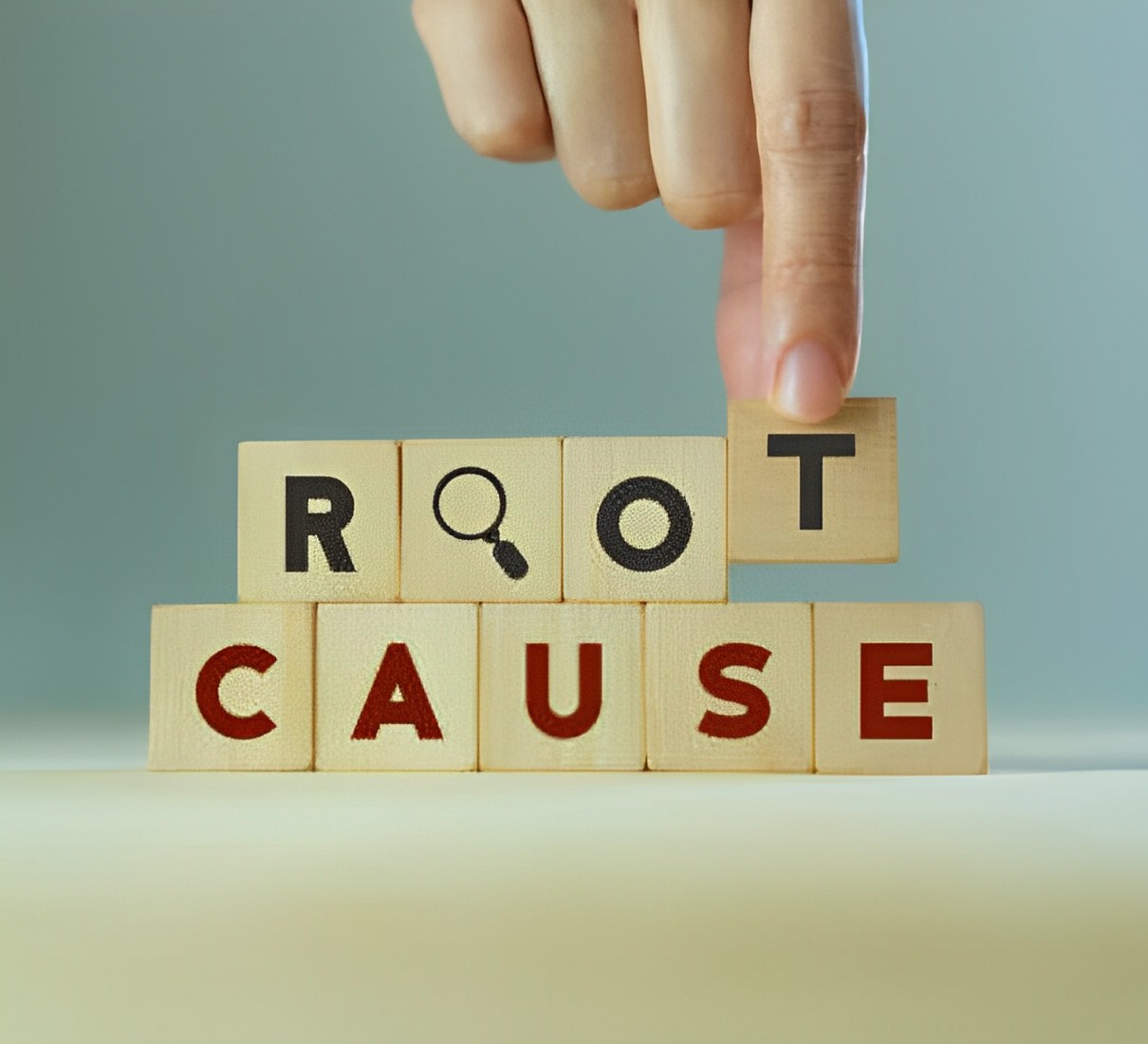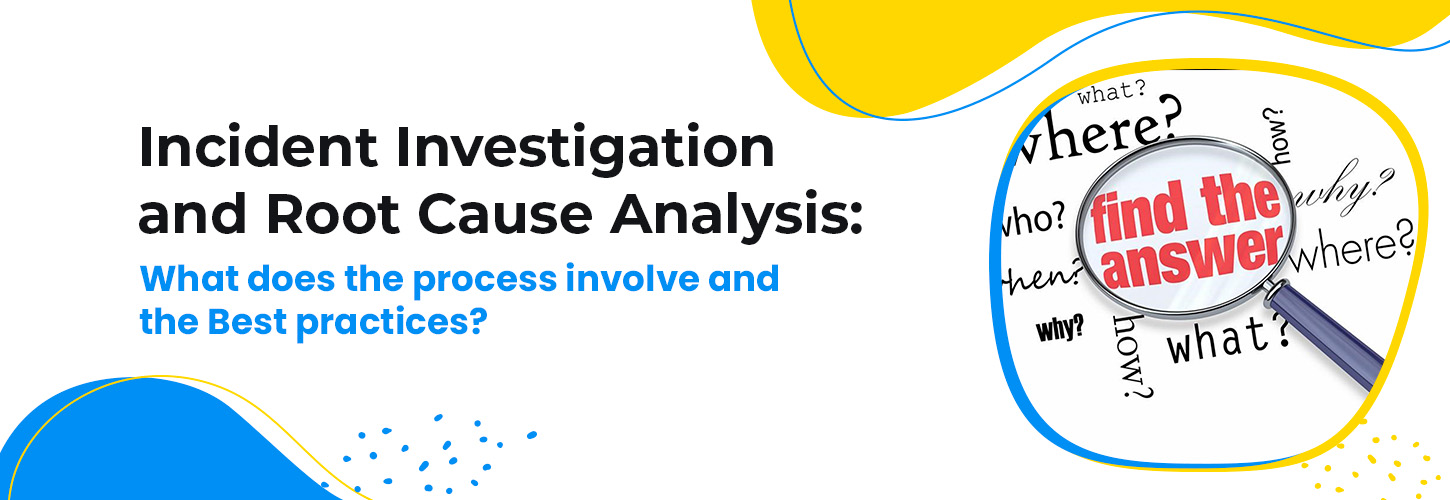Incident investigation and root cause analysis are crucial steps in identifying the underlying factors that contribute to incidents or problems within an organization. These processes help organizations gain a deeper understanding of the causes and factors that lead to the incident, rather and than merely addressing the surface-level symptoms.
Here’s a breakdown of the two processes:

Incident Investigation
Incident investigation involves gathering relevant information about an incident, such as its nature, scope, and impact. The primary goal is to identify the events, actions, or conditions that led to the incident. This process typically includes the following steps:
Collecting information: Gathering all available data and evidence related to the incident, including reports, witness statements, and physical evidence.
Examining the incident: Analyzing the sequence of events leading up to the incident and identifying any contributing factors or deviations from standard procedures.
Interviewing involved parties: Conducting interviews with individuals directly or indirectly involved in the incident to gather additional information and perspectives.
Documenting findings: Compiling all the collected information into an incident report, which summarizes the incident and its contributing factors.

Root Cause Analysis
Root cause analysis aims to determine the fundamental reason(s) behind an incident or problem. It involves a systematic examination of contributing factors to identify the underlying causes. This process typically includes the following steps:

Identify immediate causes: Determining the immediate causes or factors that directly led to the incident. These causes are typically visible and easily identifiable.
Identify underlying causes: Digging deeper to uncover the underlying causes or factors that allowed the immediate causes to exist. This involves exploring systemic or organizational issues, such as communication gaps, inadequate training, or flawed processes.
Analyze cause-and-effect relationships: Understanding the relationships between the immediate and underlying causes using techniques like the “5 Whys” or fishbone diagrams. These tools help trace back from the incident to its root causes.
Develop corrective actions: Once the root causes are identified, organizations can develop effective corrective actions or strategies to address the underlying issues. These actions aim to prevent similar incidents from occurring in the future.
When conducting an incident investigation and root cause analysis, it’s essential to follow best practices to ensure a thorough and effective process. Here are some key steps and practices to consider:
Establish a Clear Process: Define a clear and consistent process for conducting incident investigations and root cause analysis. Document the steps, roles, and responsibilities involved to ensure everyone understands the process.
Immediate Response: Promptly respond to incidents by taking necessary actions to mitigate immediate risks, ensure safety, and prevent further harm. Secure the scene, gather evidence, and identify key witnesses or individuals involved.
Preserve Evidence: Preserve and document all relevant evidence, including physical artifacts, data logs, witness statements, photographs, and any other pertinent information. Ensure the evidence remains intact and uncontaminated.
Assemble a Team: Form a diverse team of individuals with relevant expertise to conduct the investigation. Include members from different departments or disciplines to provide a comprehensive perspective.
Define Scope and Objectives: Clearly define the scope and objectives of the investigation. Identify the incident’s boundaries and determine the level of detail required for the analysis.
Gather Information: Collect all available information related to the incident, including facts, observations, data, and documentation. Conduct interviews with involved parties, witnesses, and subject matter experts to gather insights.
Analyze Data: Analyze the collected data using appropriate methods and tools. Look for patterns, trends, anomalies, and potential causal factors. Utilize data visualization techniques to aid in understanding and identifying relationships.
Identify Root Causes: Use techniques like the “5 Whys,” fault tree analysis, or fishbone diagrams to identify the underlying root causes of the incident. Focus on identifying systemic issues rather than individual mistakes.
Document Findings: Clearly document the investigation findings, including the sequence of events, identified root causes, contributing factors, and any corrective actions taken during the investigation.
Implement Corrective Actions: Develop and implement appropriate corrective actions to address the identified root causes. Ensure the actions are specific, measurable, achievable, relevant, and time-bound (SMART) to facilitate effective implementation.
Communicate and Follow-Up: Communicate the investigation findings and corrective actions to relevant stakeholders, including management, employees, and any other parties affected by the incident. Monitor the implementation of corrective actions and follow up to ensure effectiveness.
Continual Improvement: Incorporate the lessons learned from the investigation into the organization’s processes, procedures, and training programs. Continuously review and improve incident investigation and root cause analysis methodologies based on feedback and experience.
Both incident investigation and root cause analysis are iterative processes, and it may require multiple cycles of analysis and implementation to fully address the underlying issues. By conducting thorough investigations and root cause analyses, organizations can improve their systems, processes, and safety measures to prevent incidents and promote continuous improvement.
Remember, incident investigations and root cause analysis should focus on understanding the underlying factors rather than assigning blame. By following these best practices, you can enhance your organization’s ability to prevent future incidents and improve overall safety and performance.
Contact Us
Kindly call our Experts @ +91 8121563728 / +91 8015527650 or mail us @ kalyan.r@greenworldsafety.com / indumanasa.m@greenwgroup.com
Get Your Query Answered / Get Expert Assistance To Choose the Right Course for You Or Your Associates






